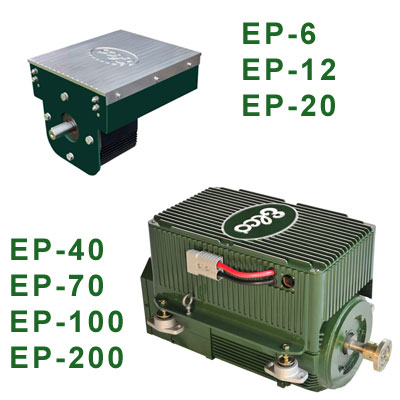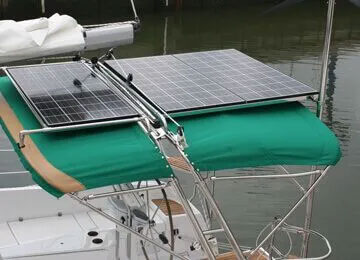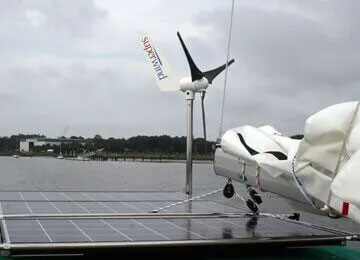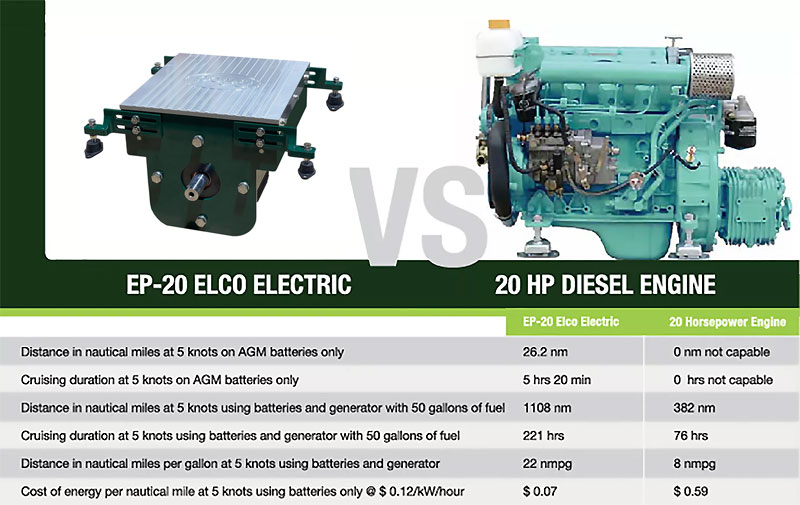Electric Inboards
What size motor do I need?
The Elco EP Electric Motor is ideally suited for displacement and semi-displacement hulls from 15′ through 85′, such as sailboats, launches, catamarans, trawlers or any vessel that travels at hull speed.
 |
|
 How long can I go without recharging?
How long can I go without recharging?
There are various factors in determining how far you can go before you need to recharge. Winds, tides, currents, weights, propeller type, vessel speed and battery size are some examples. With a generator on board running time can be extended or made continuous.
Available options with my inboard motor purchase?
When purchasing an Elco E-Power System, all the essential accessories for electric propulsion, including the batteries and chargers are available. This includes your choice of throttle, battery monitor, batteries, charger, and battery connection kit for “plug & play” installation. With batteries configured, your system can be up and running in minutes. Re-powering with electric is far less complex than replacing a diesel because there is no fuel, cooling or exhaust lines, throttle linkages, shifting linkages, or individual wires to deal with. E-Power Electric Hybrid options include generators and/or solar/ wind components to meet continuous cruising needs.
20 HP Comparison Chart
 How do I charge?
How do I charge?
Shore power – Charge for pennies a day by plugging into shore power at the dock.
Solar power – Solar panels continue to increase your system’s efficiency. Harness this resource to charge smaller battery banks over longer periods while staying off the grid.
Wind power – Wind is abundant and can be used to charge your batteries over longer periods.
Propeller Regeneration – Your dragging propeller is an energy resource. Tap this energy to “top off” the batteries while under sail.
 Diesel Generator – Electric cruising can be extended or even become continuous when you have a properly sized generator on-board. Size a generator to an Elco EP Motor with the help of the Elco technical staff.
Diesel Generator – Electric cruising can be extended or even become continuous when you have a properly sized generator on-board. Size a generator to an Elco EP Motor with the help of the Elco technical staff.
Elco recommends that your batteries and charger be planned and properly configured by a qualified marine electrician.
Why is our electric motor the most efficient?
The AC induction motor is more efficient than its DC counterpart by a factor of 20% to 40%, depending on the load. It creates a lot more torque, accelerates faster, and since it has no mechanical connections, other than the ball bearings at each end of the rotor, maintenance is minimal. In short, it is a simple, rugged and reliable design. Furthermore, an AC motor is more receptive to electrical regeneration – it naturally wants to regen.
All Electric
With the all electric configuration, an electric motor powered by batteries drives the propeller shaft. This system is ideal for day cruises in displacement and semi-displacement boats such as sailboats, launches, tenders, and sloops. Installation is simple, and the motor fits most standard motor mounts. The batteries can be strategically positioned to keep the boat balanced.
Hybrid Electric Serial
Similar to the all electric configuration, the electric motor drives the propeller shaft directly. The difference is the addition of a gas or diesel generator, which has no direct connection to the propeller shaft. Instead, the generator powers the motor and charges the batteries. This provides boaters with the option of running the motor strictly off battery power for a quiet, clean boating experience, or switching to the generator when the batteries are low. The serial hybrid-electric configuration is great for boaters who go on day cruises and want to have a backup power supply should a trip take longer than battery power alone can sustain.
Hybrid Electric Parallel
The parallel hybrid-electric configuration features a diesel or gas motor that is connected to the propeller shaft through an electric motor and a clutching system. The parallel hybrid-electric configuration allows the motor to drive the propeller directly and charge the batteries while the electric motor is inactive. With the flip of a switch, the vessel can switch to exclusively power the electric motor with batteries for situations when the motor would be inefficient.
Hybrid Electric Parallel Serial
Elco’s EP hybrid-electric parallel and serial system benefits commercial and pleasure vessels. Tugboats employed by harbor services can use a combustion motor to get where they are needed in a hurry. However, most of their time is spent idling or actively maneuvering to support other vessels. In these low-speed situations, the combustion motor can be shut down so the system can switch to the electric motor for more efficient operation.

